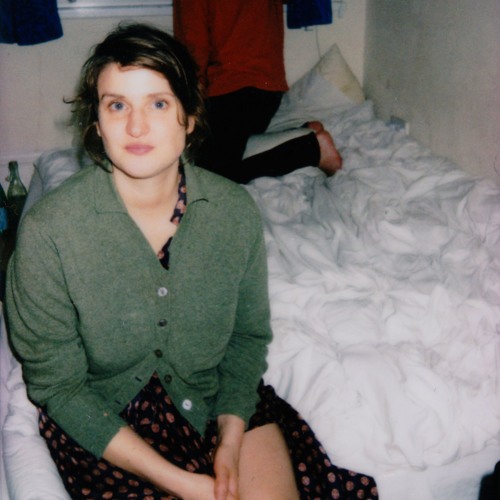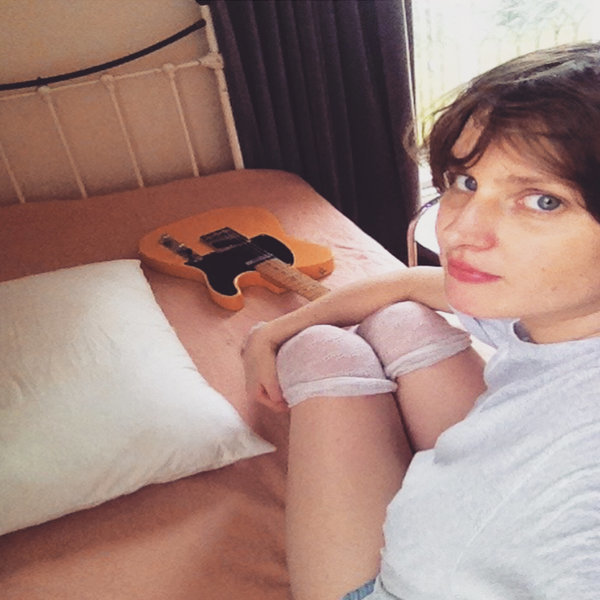KIMI ZARATE-SMITH reviews Painting stupid girls by Joanne Robertson, exploring her introspection, rawness, and techniques as a contemporary artist.
When I came across Joanne Robertson’s 2020 EP, Painting stupid girls, I felt I had been meaning to find it, as it had been a while since I heard music that settled within me in such a way. I sifted through what it had instilled in me: the familiar warmth of indie sleaze and shoegaze, Mazzy Star’s gentleness, then, the striking eeriness of Daniel Johnston, and the volatile, handwritten melodrama of Sibylle Baier — all to realise it had no business at all being indexed into some categorical, post-genre terminology. Robertson’s music is not a performance, but rather an arresting and stern, real-time reckoning with folk that is fuzzy and compassionate and cruel and ominous. I have treated this EP like a big sister, or one that I want badly, I have come to it for advice, I have argued with it, loved it and been hurt by it. Painting stupid girls is awake and it can speak.
Robertson decomposed my understanding of clean-cut, singer-songwriter-esque storytelling. The very fact that I have literally no clue what’s being said seventy-five percent of the time, but the words that I do hear have a real ability to cut through me, is testament to Robertson’s lyrical style. Her iconic strung out vowels invite us to reflect, and create a space for her vocal texture to shine.

The starting track, ‘am i grief’, plummets the EP into a bittersweet pool of nostalgia, questioning, anger and tenderness. “Sweet grief,” she sings, gently pulling the words out of the end of her verses, giving a soft quality to an otherwise disjointed aural landscape.
Robertson yearns and reminisces in the second track, ‘high noon’. She calls out “high in the morning” and sets the scene: dark, stirring, yet bleak. Though it is clear that Robertson enjoys contrast and oxymorons throughout the EP, this song stands out as she subtly layers a central double-entendre in both its lyrics and sonic character. The song plays with the conjunction of morning/mourning. Robertson places the freshness and optimism that the morning brings, if we imagine it as a bright opposite to night-time, against the bitterness and darkness of mourning, and structures the song around the concepts of cycles, meaning, and introspection. The opening consists of repeated guitar strums, mnemonic of church bells sounding the funeral toll, as though death follows her.
High in the morning.
High in the mourning.
The stretch of the dark / it goes in / high mornings / still calling
Nighttime opens…
How can one express the feeling of desensitivity? Robertson sinks into it: the track is muffled with numbing reverberations that create a kind of echo chamber, a reminder that you can’t escape mourning, so you get high, you mourn, you get high, you forget, you observe, you recall, it’s a cycle that she guides us through. Even mornings are no longer clear, and mourning clouds day and night. Does she want to be saved? Or will it take over?

The last track on Painting stupid girls, ‘peacecraft,’ feels like a seven minute goodbye. “I believe you today and everyday,” she affirms. Innocence, vulnerability, open honesty. As ‘peacecraft’ makes us realise, Robertson pulls herself out of dejection and finds a calming strength, as though the last track is the outcome of her toil and lament. The EP relishes in its sadness, its homecooked-ness, its folky comfort.
Robertson’s works are modern and contemporary, and she possesses an ability to flow through genre purposefully, thinking about what emotions that different genre tropes or motifs can instil.
Her fantastic, Bjork-y, trip-hoppy and fluid album, Walhalla (2017), made earlier alongside Dean Blunt, is exciting and experimental (listen to ‘FUCKBOY ANTHEM’ and ‘PUSHER’ – they are so different but so complimentary). Wildflower (2016) sounds completely unlike Robertson, in that it has its outbursting moments of angry girl-rock. She has committed to expression on all levels. She also paints.
Out of Robertson’s fourteen-year discography, it is Painting stupid girls that I always go back to. Robertson displaces what it means to be a contemporary folk artist, in an era that cannot depart from Bon Iver style complexity. Her minimalism can be heard in her 2008 EP, The Lighter, however, it is reinforced with a sense of maturity, calm, and self-awareness that makes Painting stupid girls a beautifully well-rounded project, and a fill-in family member.
Listen to Joanne Robertson on Spotify and Apple Music.
Cover image source: artist.





